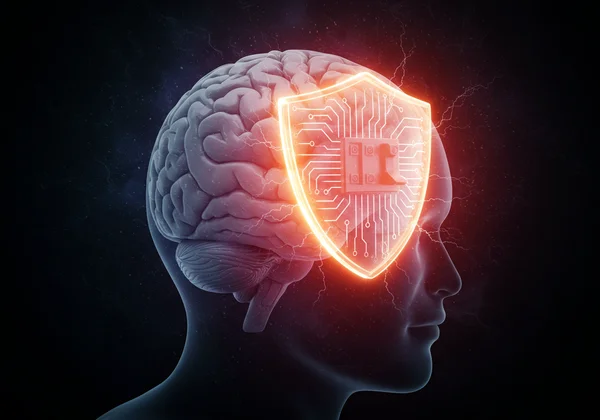CPTSD Dissociation & The CPTSD Test: Understand Symptoms & Reconnect
Are you experiencing moments where you feel detached from your body, your surroundings, or even your memories? This unsettling experience, known as cptsd dissociation, is a common but often misunderstood symptom of Complex PTSD. It can feel like you're floating outside yourself, watching your life as a movie, or finding gaps in your day you can't account for. Have you ever wondered why these moments of disconnection happen? This guide will help you understand what dissociation is, why it happens, and offer gentle ways to find your way back to connection and presence. Gaining clarity is the first step, and a confidential screening can provide a structured look at your experiences.
What is Dissociation in CPTSD?
At its core, dissociation is a mental process of disconnecting from your thoughts, feelings, memories, or sense of identity. When linked to Complex PTSD, which often stems from prolonged or repeated trauma, it isn't a sign of weakness; it's a profound survival skill. It’s the mind's way of creating distance from overwhelming pain or fear when physical escape isn't possible. Understanding this protective function can be the first step in reducing self-blame and starting the journey toward healing.
The Brain's Protective Mechanism: Why We Dissociate
Imagine your brain has a circuit breaker. During an intensely stressful or traumatic event, the emotional and sensory input can become too much to handle, threatening to overload the system. Dissociation is the brain's way of flipping that breaker. It temporarily shuts down your conscious connection to the event to protect you from the full psychological impact. For survivors of chronic trauma, this mechanism can become a default response to stress, activating even in situations that are only mildly triggering. It's a testament to your resilience, a strategy that helped you endure the unbearable.

Exploring Its Forms: Derealization, Depersonalization, and Amnesia
Dissociation isn't a single experience; it manifests in several distinct ways. Recognizing them can help you name what's happening and feel more in control.
-
Depersonalization: This is the feeling of being detached from yourself. You might feel like you are an outside observer of your own thoughts, feelings, or body. People sometimes describe it as feeling robotic or like they are not real.
-
Derealization: This involves feeling detached from your surroundings. The world around you may seem unreal, foggy, dreamlike, or visually distorted. Familiar places can suddenly feel strange and unfamiliar.
-
Amnesia: This refers to dissociative memory loss. You might experience gaps in your memory for specific traumatic events or even large chunks of your personal history. It can also manifest as forgetting what you did just hours or minutes ago.

Recognizing Dissociation in Your Daily Life
Understanding the clinical terms is one thing, but seeing how dissociation appears in everyday moments is key to managing it. It’s often more subtle than a dramatic, movie-like trance. For many, it's a quiet, confusing, and often invisible struggle that impacts relationships, work, and self-perception, often leaving you with a profound sense of feeling disconnected from reality.
Feeling Detached: When Reality or Yourself Seems Unreal
This is the classic experience of derealization and depersonalization. You might be in a meeting at work, fully aware of what’s happening, yet feel as if you’re watching it from the back of the room. You could be talking to a loved one and suddenly feel like you’re just a machine going through the motions, with no emotional connection to your own words or actions. The world might look flat, colorless, or as if there's a glass wall between you and everything else. These moments can be deeply disorienting and isolating.
Time Warps & Memory Gaps: Understanding Trauma-Related Amnesia
A common and distressing sign of dissociation is experiencing issues with memory, a key aspect of cptsd and memory loss. This isn't just simple forgetfulness. You might arrive at a destination without any memory of the drive. You may find items in your shopping cart that you don't remember putting there. People might refer to conversations you have no recollection of. These memory gaps are not a personal failing but a direct result of your brain protecting itself by not fully recording experiences that it perceives as threatening or overwhelming.
Operating on 'Autopilot': Functioning Without Full Awareness
This is one of the most subtle forms of dissociation. You might go through your entire morning routine—showering, getting dressed, making coffee—without being truly "present" for any of it. You can perform complex tasks and function at work or home, but with a sense of being mentally checked out. Later, you may feel exhausted and drained, without fully understanding why. This "autopilot" mode is a way to conserve mental energy and get through the day when your internal system is overwhelmed. Recognizing this pattern is a crucial step toward learning how to reconnect.

Gentle Ways to Reconnect and Ground Yourself
When you feel yourself drifting away, the goal isn't to fight the dissociation but to gently guide your awareness back to the present moment. These grounding techniques use your senses to anchor you to the here and now, reminding your brain that you are safe.
Sensory Engagement: The Power of the 5-4-3-2-1 Method
This is a simple yet powerful technique to pull your focus out of your head and into your environment. Wherever you are, pause and gently notice:
-
5 things you can see: Look around and name five objects, like "blue pen," "white wall," "green plant."
-
4 things you can feel: Notice the sensation of your feet on the floor, the texture of your shirt, the cool air on your skin.
-
3 things you can hear: Listen for sounds near and far, like a clock ticking, traffic outside, or your own breathing.
-
2 things you can smell: Try to identify scents in the air, perhaps coffee brewing or the soap on your hands.
-
1 thing you can taste: Notice the taste in your mouth or take a sip of water and focus on the sensation.

Mindful Movement & Breathing: Anchoring Back to the Present
Your body is your most immediate anchor to the present. Try slowly pressing your feet into the floor, feeling the solid ground beneath you. Clench and unclench your fists, paying close attention to the changing sensations of tension and release. Simple, deep breathing can also be incredibly effective. Inhale slowly for a count of four, hold for a count of four, and exhale slowly for a count of six. The physical sensations of movement and breath are powerful signals to your nervous system that you are in your body, right now.
Cultivating Internal & External Safety to Reduce Dissociation
Dissociation is a response to a perceived lack of safety. Therefore, actively creating safety is a long-term strategy for reducing its frequency and intensity. Externally, this can mean tidying your space, wrapping yourself in a weighted blanket, or listening to calming music. Internally, it involves self-compassion. Remind yourself, "I am having a normal reaction to trauma. I am safe in this moment." By consistently showing your brain that you are safe now, you can slowly reduce its reliance on dissociation as a coping mechanism.
When and How to Seek Professional Support for Dissociation
While grounding techniques are invaluable for in-the-moment support, working with a professional is often essential for healing the roots of dissociation. A qualified therapist can help you process underlying trauma in a safe and structured way.
Understanding Trauma-Informed Therapies for Dissociation
Not all therapy is the same. Look for therapists trained in trauma-informed modalities like Eye Movement Desensitization and Reprocessing (EMDR), Somatic Experiencing, or Internal Family Systems (IFS). These approaches understand the role of the nervous system and are designed to work with trauma symptoms like dissociation without re-traumatizing you. They focus on helping you build a sense of safety and reconnecting your mind and body.
Taking the First Step: How a CPTSD Test Can Offer Clarity
Feeling unsure if what you're experiencing is dissociation or related to CPTSD is a common hurdle. This uncertainty can make it hard to seek help. Taking a scientifically-based screening tool can be an empowering first step. The free CPTSD test available on our site is based on the International Trauma Questionnaire (ITQ), aligning with WHO standards. It’s completely confidential and provides a preliminary risk assessment that can validate your feelings and give you the clarity needed to have a more informed conversation with a mental health professional.
Finding Clarity and Connection: Your Path Forward
Understanding CPTSD dissociation is a journey of self-discovery and compassion. It is not a character flaw, but a survival tool that has outlived its usefulness. By recognizing its forms, practicing gentle grounding techniques, and seeking the right support, you can begin to reconnect with yourself and the world around you. Your experiences are real, and they deserve to be understood.
If this article resonates with you, you're not alone. Taking the next step to understand your symptoms can provide invaluable insight and validation. Your path to connection starts with clarity.
Disclaimer: This article is for informational purposes only and is not a substitute for professional medical advice, diagnosis, or treatment. The test on this website is a screening tool, not a diagnostic instrument. Always seek the advice of a qualified mental health provider with any questions you may have regarding a medical condition.
Frequently Asked Questions About CPTSD and Dissociation
How can I tell if I have CPTSD?
Complex PTSD involves a range of symptoms beyond those of classic PTSD, often related to difficulties with emotional regulation, relationships, and self-perception, alongside symptoms like dissociation. The most reliable way to know is through an assessment by a trauma-informed professional. However, a screening tool like our online CPTSD test can be a helpful starting point to see if your symptoms align with the criteria for CPTSD.
What is a "freeze" response in CPTSD, and how is it related to dissociation?
The "freeze" response is one of the four primary trauma responses (Fight, Flight, Freeze, Fawn). It involves feeling stuck, numb, or immobilized in the face of a threat. Dissociation is often a key component of the freeze response; it’s the mental detachment that accompanies the physical shutdown, helping you endure a situation that feels inescapable.
Do people with CPTSD feel disconnected from reality often?
Yes, chronic feelings of disconnection are a hallmark symptom for many people with CPTSD. Because the trauma was often prolonged, the brain may have adopted dissociation as a frequent coping strategy. This can lead to regular episodes of derealization or depersonalization, even in response to minor daily stressors. To see how your symptoms measure up, you can get personalized insights with our test.
What are some signs of memory gaps related to CPTSD?
Signs can range from forgetting specific details of a traumatic period to having large, blank spaces in your life's timeline. You might also experience "micro-amnesias," such as not remembering parts of a conversation you just had, finding yourself in a room without knowing why you went there, or losing track of time frequently.